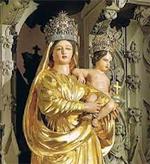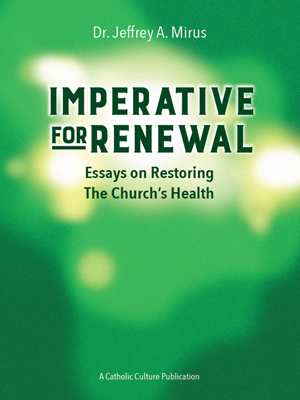Catholic Activity: Nameday Notes for John
John has historically been one of the most common names for boys, and there are many saints named John, too. This is a little overview of some of the most popular saints named John with ideas for symbols and dessert for the nameday.
DIRECTIONS
What splendid names for boys there are —
There's Carol like in rolling car,
And Martin like a flying bird,
And Adam like the Lord's first word,
And Raymond like the harvest moon,
And Peter like a piper's tune,
And Alan like the flowing on
Of water. And there's John, like John. (From Poems for Children by Eleanor Farjeon)
JOHN
Indeed there is John, like John, to the number of six million boys born in the last decade who bear the beloved name which dates earliest as a popular name. Ranking next are Michael, James, Robert, William, David, Thomas, Stephen, Richard and Joseph. Also high on the list of favorite boys' names are Gary, Ronald, Loren, and Gerald.
Over two hundred saints are called John. Three of them bear the name John the Baptist, in honor of the last prophet of the Old Testament and first saint of the New: John Vianney, the Curé of Ars, patron of parish priests; John Baptist Rossi; and John Baptist de la Salle, whose lifework was the foundation of the Brothers of Christian Schools. Like their namesake, they have a lamb cake (see Lamb Cake) as their nameday dessert.
At least seventy-three of the post-Reformation English martyrs were called John. The name in Irish is Seán (pronounced Shawn); Scotch, Ian; Italian, Giovanni; French, Jean; Spanish, Juan; Portuguese, Xuan; Dutch, Jan; German, Johann and Hans; Russian, Ivan. Another Irish form of the name is Eoin (pronounced o-en); the Welsh is Evan.
Patron for girls named Beverley is the Benedictine John of Beverley, who founded Beverley Abbey in England. His symbol is a cross or a shrine. John the Dwarf is described as having been "short-tempered and conceited by nature but gentle and humble by grace." John Bread-and-Water (Pan y Agua) acquired his nickname by a lifelong fast on bread and water. There is a John of Poland, John the Obedient, and, for the Joneses, Blessed John Jones, a Welsh Franciscan martyred for his priesthood.
Among the great founders is St. John Bosco, who placed his Institute under the protection of Our Lady Help of Christians. Don Bosco, with St. Mary Mazzarello, formed the Daughters of Our Lady Help of Christians for the education of girls. John of Matha, whose symbol is a chain or cross, founded the Trinitarians for the redemption of captives; John of God, the Order of Brothers Hospitallers; John Eudes, the Sisterhood of Our Lady of Charity of Refuge and the Congregation of Jesus and Mary (Eudists) for the education of priests; and John Leonardi, the Institute of Clerks Regular of the Mother of God.
St. John Chrysostom, surnamed the "golden-mouthed" for his great eloquence, is famous for his contribution to the Greek Liturgy. His symbol is a beehive. St. John Damascene, author of numerous liturgical hymns and last of the Greek Fathers, has music as his symbol. St. John of the Cross ranks as a Doctor of the Church because of the fame of his mystical writings: The Ascent of Mount Carmel, The Dark Night of the Soul, and The Spiritual Canticle, superb masterpieces of Spanish literature.
Blessed John Mzek, a Negro of Uganda who baptized many in the hour of death, was beheaded in January, 1887. Among the North American martyrs are two Jesuit saints, John de Brébeuf, a priest who worked among the Hurons for twenty-four years until his martyrdom by the Iroquois in 1649, and John Lalande, his helper who was martyred in 1646. John de Brébeuf wrote the first American Christmas carol (included in Christmas to Candlemas, $.20 from LP, see Abbreviations).
Among the English martyrs called John are the Franciscan John Forest, burned to death under conditions of revolting cruelty; John Fenwick, John Gavan and John Ogilvie, Jesuits executed for their priesthood; and John Roberts, a Benedictine. The latter's resourcefulness and courage made him an outstanding figure among the priests of the English mission. Imprisoned and released six or seven times, he was finally captured in his priestly vestments while saying Mass and was executed. John Fisher, most faithful of the English bishops, upheld the cause of the Queen against the adulterous Henry VIII and was beheaded on Tower Hill. He died with the Te Deum on his lips.
St. John Berchmans is patron of young Mass servers. In his short life he kept the minutest points of the Jesuit rule with heroic fidelity and died in Rome during his novitiate.
For separate Activities for John the Baptist and John the Apostle and Evangelist.
Activity Source: My Nameday — Come for Dessert by Helen McLoughlin, The Liturgical Press, Collegeville, MN, 1962






